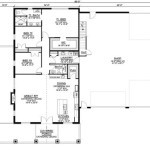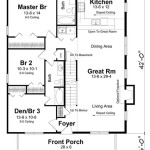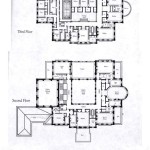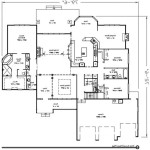How To Read House Building Plans
When you're planning to build a house, one of the most important things you'll need is a set of house plans. These plans will provide you with all the information you need to build your home, from the foundation to the roof. If you're not familiar with reading house plans, don't worry - this guide will help you get started.
Getting Started
The first step to reading house plans is to understand the different types of plans that are available. There are three main types of house plans: architectural plans, structural plans, and mechanical plans. Architectural plans show the overall design of the house, including the layout of the rooms, the exterior elevations, and the roof plan. Structural plans show the structural details of the house, including the foundation, the framing, and the roof framing. Mechanical plans show the location of the mechanical systems in the house, such as the heating and cooling system, the plumbing system, and the electrical system.
Once you understand the different types of house plans, you can start to read them. The best way to do this is to start with the architectural plans. These plans will give you a general overview of the house and help you understand the layout of the rooms. Once you have a good understanding of the architectural plans, you can move on to the structural plans. These plans will show you the details of the house's structure, and they will help you understand how the house is built. Finally, you can move on to the mechanical plans. These plans will show you the location of the mechanical systems in the house, and they will help you understand how the house works.
Understanding the Symbols
One of the most important things to understand when reading house plans is the symbols that are used. These symbols represent different elements of the house, such as walls, windows, doors, and appliances. It is important to learn the symbols so that you can understand what is shown on the plans.
There are a few different ways to learn the symbols. One way is to refer to the legend that is typically included on the plans. The legend will list the symbols and their meanings. Another way to learn the symbols is to practice reading house plans. The more you read, the more familiar you will become with the symbols.
Understanding the Scale
Another important thing to understand when reading house plans is the scale. The scale of the plans will tell you how big the house is. The scale is typically expressed as a ratio, such as 1/4 inch = 1 foot. This means that for every 1/4 inch on the plans, there is 1 foot in the actual house.
It is important to understand the scale of the plans so that you can measure the dimensions of the house. To do this, you can use a ruler or a scale. You can also use the scale to compare the size of different parts of the house.
Conclusion
Reading house plans can be a bit challenging, but it is an important skill to have if you are planning to build a house. By following the tips in this guide, you can learn to read house plans and understand the information that they contain.

How To Read A Floor Plan With Dimensions Houseplans Blog Com

How To Reading Construction Blueprints Plans 1
How To Read House Plans Howstuffworks

How To Read House Plans Floor Building In 10 Minutes Archid

How To Properly Read Floor Plans And What Details Look For

How To Read House Plans The Construction Set

Reading Residential Floor Plans Jenish House Design Limited

How To Read A Floor Plan

How To Read House Construction Plans
How To Read Floor Plans Mangan Group Architects Residential And Commercial Takoma Park Md








